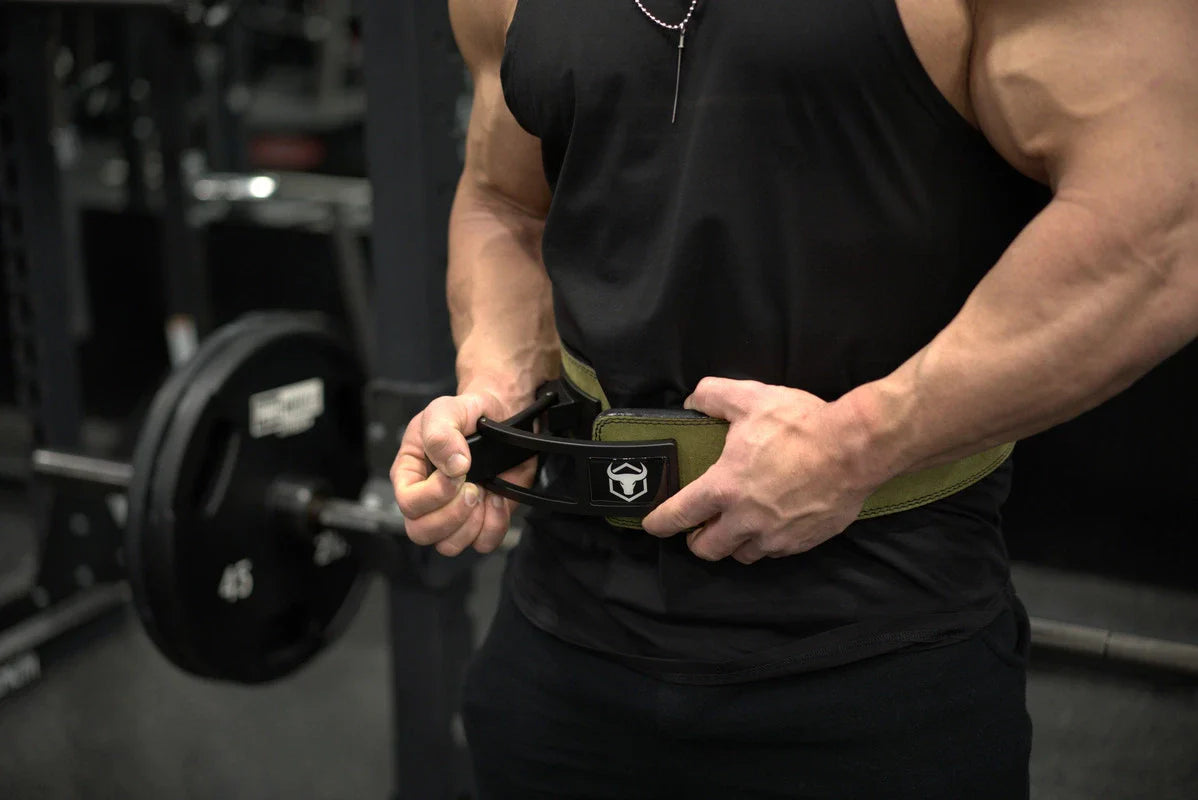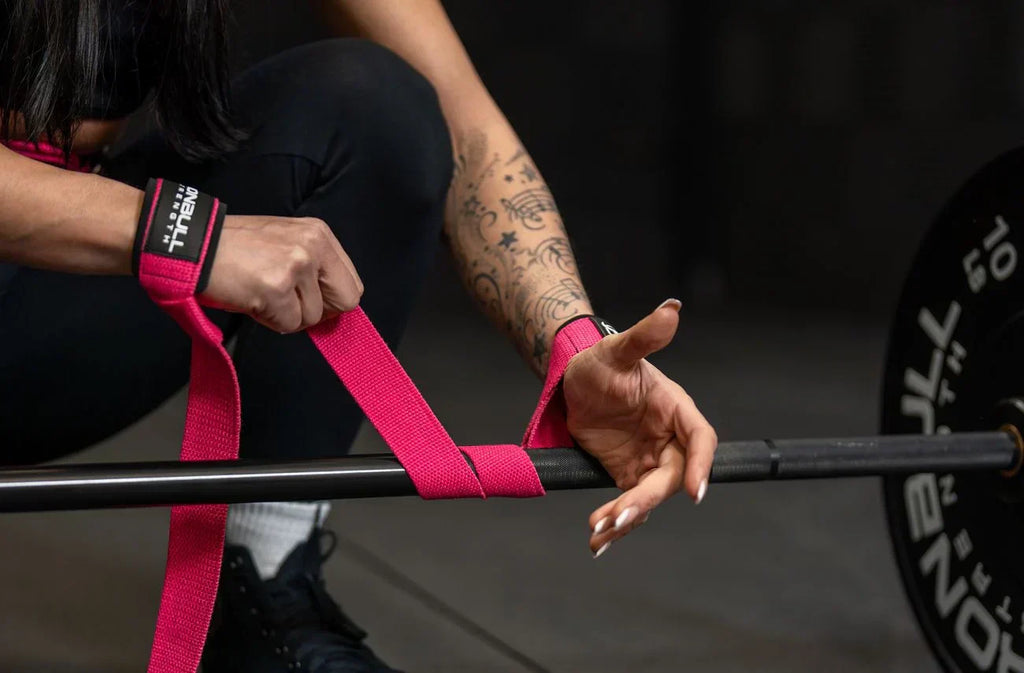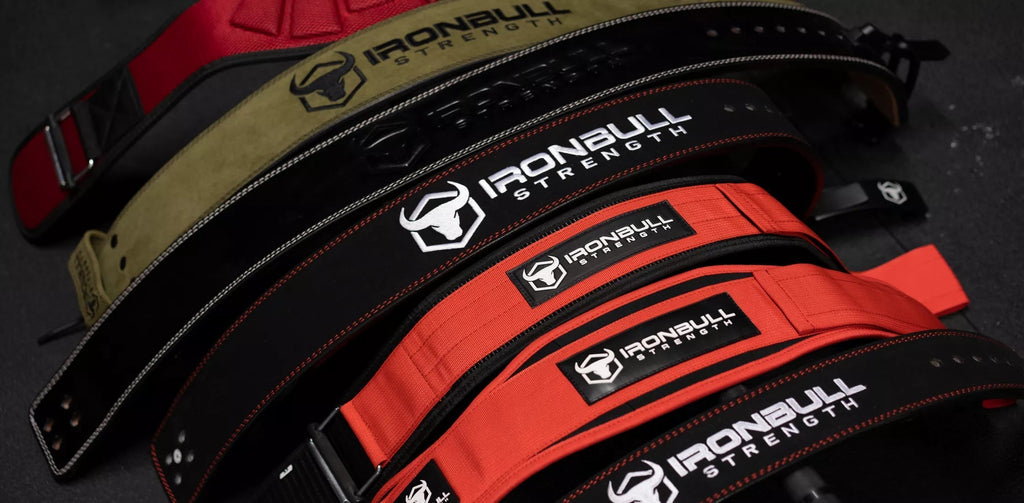How Tight Should Your Weightlifting Belt Be? The Ultimate Guide for Every Lifter


Your weight belt is an indispensable lifting tool. Its effectiveness, though, depends on your ability to wear it properly. And that boils down to getting the right tightness.
A belt that is too loose will fail to support your core muscles, diminishing its purpose in stabilizing your spine during heavy lifts. On the other hand, an overly tight belt will restrict your range of motion, hindering your ability to execute exercises with proper form and potentially leading to discomfort or injury.
So, how tight should your lifting belt be?
This article provides the definitive answer to that question.
TL: DR: How Tight Should a Lifting Belt Be?
As a general rule, you will know you’ve got the right weightlifting belt tightness if you can put one (but not two) fingers between the belt and your stomach. In the remainder of this article, we discuss factors that affect tightness, but these will result in only minor changes to this rule.
Understanding the Purpose of a Lifting Belt
Your weightlifting belt has three vital jobs to do as you lift:
Core Support: Your belt stabilizes your spine, helping maintain proper form and reducing the risk of injury.
Intra-Abdominal Pressure: By wearing the belt correctly, you create a controlled pressure within your abdominal cavity. This pressure adds an internal brace to support your spine.
Balancing Support and Flexibility: Your lifting belt should enhance your stability without compromising your range of motion. Striking this delicate balance ensures that you benefit from the support needed for heavy lifts while maintaining the flexibility required for executing exercises with precision and comfort.
Factors Influencing Lifting Belt Tightness
There are several variables that affect the ideal tightness of your lifting belt. Here are three things to take into account:
Type of Exercise
- Squats: Many lifters prefer wearing the belt lower on the torso, towards the hip bones, rather than the ribs. This positioning might make the belt feel tighter. Pay attention to how your abdomen expands at the bottom of the squat; if it’s too tight, you might lose tension in the hole.
- Deadlifts: Deadlifts generally warrant a slightly looser fit. The hinging nature of the lift makes an overly tight belt uncomfortable. Many lifters wear the belt higher, under the ribcage, and closer to the natural waistline, enhancing comfort during deadlifts.
- Bench Press: You should only use a belt on your heaviest bench press sets for powerlifting and weightlifting. Doing so will support your back arch and stabilize the serratus anterior. Wear your belt a little tighter than you would for a squat.
- Snatch: Being a dynamic movement, the snatch may call for a slightly looser belt to allow for better breathing and flexibility in different positions. A nylon belt is recommended to prevent the buckle from hindering movement.
- Clean & Jerk: The clean and jerk involves front squatting the weight up, leading to more direct spinal loading than the snatch. The belt should be slightly tighter than on the snatch.
Individual Body Anatomy
Your body type and shape affect ideal weightlifting belt tightness. That’s because the distribution of muscle and fat around the torso affects how the belt interacts with the body during the exercise. Here’s a breakdown:
Lean Physique: Proper belt placement is crucial for lifters with a lean physique. Experiment with different positions to find where the belt provides optimal support without causing discomfort.
A more flexible material like nylon may be suitable for lean lifters, allowing for better contouring of the body and accommodating movements in various exercises.
Muscular Build: Lifters with a more muscular build may require additional support, especially during heavy lifts. Ensure that the belt is snug enough to provide stability without impeding movement.
Consider opting for a slightly wider belt, as it may distribute pressure more evenly across the torso, catering to the increased muscle mass.
Overweight Lifters: Look for belts with a broader back to distribute pressure evenly, offering effective support during lifts.
Experiment with belt placement to find a comfortable yet supportive position. This may involve slightly higher or lower wearing of the belt on the torso, depending on individual body contours.
Opt for a lifting belt made from flexible and breathable materials like nylon. This ensures comfort and accommodates movements while providing the necessary support.

Belt Material and Fastening System
Your weightlifting belt's material and closure type play a crucial role in determining its tightness and effectiveness. Understanding how these factors interact can help you choose the right belt for your lifting style and preferences.
LEATHER BELTS
Description: Rigid, thicker, and durable, providing the tightest fit.
Initial Tightness: Leather belts are stiff when new, offering an initially tight fit that softens and conforms to your body with use.
Long-Term Fit: After breaking in, they provide a natural yet rigid support, ideal for heavy and static lifts like deadlifts and squats.
NYLON BELTS
Description: Flexible and thin, allowing a wide range of motion and offering a less tight fit than leather.
Comfort Focus: Nylon belts prioritize comfort over extreme tightness, making them suitable for dynamic movements like snatches and clean & jerks.
LEVER BELT
Tightness: Lever belts provides the tightest and most secure fastening.
Adjustability: Prefixed, requiring a screwdriver for adjustments after initial sizing.
Considerations: Difficult to adjust on the spot, impacted by workout timing and food intake.
PRONG BELT
Tightness: Nearly as secure as a lever belt but offers easier adjustability.
Fastening: A prong belt secures by pulling the strap through a loop and selecting a hole, similar to a regular belt.
Versatility: Ideal for those who prefer fluctuating belt tightness between lifts or on different days.
[Related: Lever Belt vs. Prong Belt: Which One Is Better?]
VELCRO BELT
Fastening: Uses Velcro for closure, offering a less secure fit compared to prong and lever belts.
Grip Consideration: Grip may wear out over time, potentially opening under high pressure.
Comfort Emphasis: Naturally meant to be worn a bit looser, prioritizing comfort over extreme tightness.
Personal Comfort and Preference
Comfort is highly individual and can vary widely from lifter to lifter. A lifting belt should provide a sense of support without causing discomfort or impeding movement. Learn to distinguish between the sensation of tightness that offers support and tightness that hinders performance.
Finding the right balance between support and comfort often involves a process of trial and error. Experiment with different tightness levels during various exercises to identify what feels optimal for you.
Your body provides valuable feedback during lifting sessions. If a particular tightness level feels uncomfortable or restricts your range of motion, it’s crucial to listen to these signals and adjust accordingly.
Step-by-Step Guide to Optimal Tightness Level
Step 1: Understand Your Body
Recognize your body type and shape. Understand how your muscles and fat are distributed around your torso, as this will impact how the belt interacts with your body during movements.
Take note of your waist and hip proportions. Experiment with wearing the belt slightly lower on the hips or higher towards the natural waistline to determine which placement feels more supportive.
Step 2: Consider the Exercise
Different exercises may require varying levels of tightness. For instance, squats might benefit from a tighter fit, while deadlifts may feel more comfortable with a slightly looser setting.
Step 3: Evaluate Personal Comfort
Acknowledge the subjective nature of comfort. Be attuned to your individual sensations and preferences. If a particular tightness feels restrictive or uncomfortable, it’s a signal to make adjustments.
Pay attention to sensory feedback. The belt should provide support without causing pain or hindering your range of motion. Find the balance where you feel adequately supported while maintaining comfort.
[Related: Lower Back Pain From Squats: Causes, Solutions, and More]
Step 4: Experiment Gradually
Avoid making drastic changes. Instead, make gradual adjustments to the tightness level. Small increments allow for a nuanced understanding of how different settings impact your performance.
Experiment with tightness levels specific to each exercise. For example, try different settings for squats, deadlifts, the snatch, and other movements. Note which tightness level enhances your performance without compromising comfort.
Step 5: Post-Workout Reflection
Reflect on your overall comfort post-workout. Evaluate factors like soreness, flexibility, and satisfaction with the lifting experience.
Step 6: Material Choice
Consider the material of your lifting belt. Opt for flexible and breathable materials, such as nylon, which provide support while accommodating various movements. The flexibility of the material contributes to a customized and comfortable fit.
Step 7: Continuous Refinement
Recognize that your ideal belt tightness may change over time. Be open to continuous refinement as your body adapts and your lifting routine progresses. Regularly reassess your comfort and make adjustments accordingly.
Common Mistakes to Avoid
As a gym owner and personal trainer, I’ve noticed half a dozen recurring errors that lead to improper weightlifting belt tightness:
Wearing the Belt Like a Fashion Accessory
Mistake: Treating the weightlifting belt as a fashion accessory rather than a performance tool can lead to inadequate support. If you don’t feel the need to loosen the belt between sets, it’s probably not tight enough.
Solution: Ensure you’re not just measuring your waist circumference at rest. Breathe in deeply each time you put on the belt, allowing for a snug but not constricting fit.
Not Leaving Room to Breathe/Brace
Mistake: Clasping the belt too tightly while inhaling restricts the ability to create tension and brace during lifts.
Solution: Fasten the belt with a somewhat relaxed stomach and partially exhaled breath to leave room for proper bracing and breathing.
Not Accounting for Bloating
Mistake: Failing to adjust the belt based on daily waist size fluctuations can lead to discomfort and suboptimal support.
Solution: Regularly assess your size for the day, adjusting prongs or velcro belts accordingly. Stay consistent with gym visits and pre-training meals to minimize fluctuations.
Not Accounting for Digestive Issues
Mistake: Wearing a belt too tight can exacerbate digestive problems, including heartburn and indigestion.
Solution: Loosen the belt slightly on days when you’re not feeling your best. Prioritize your well-being over a super-tight fit to avoid worsening digestive discomfort.
Not Tightening the Belt Enough
Mistake: Insufficient tightness may compromise support for the lower back and abdominal muscles during heavy lifts.
Solution: Find a balance where you can still breathe comfortably, and your lower back feels secure. Tighten the belt enough to provide support without restricting breathing.
Tightening the Belt Too Much
Mistake: Overly tight belts can lead to injuries, including muscle strains and hernias, by limiting the natural expansion and contraction of abdominal muscles.
Solution: Opt for a slightly looser fit to allow free movement of your abdominal muscles, preventing unnecessary stress on muscles and joints.
FAQs
Q: How tight should a belt fit?
A: As a general guide, you should be able to slide one finger between the belt and your body. However, the ideal tightness depends on factors like personal preference, the type of lift, and your body shape. Generally, the belt should be snug enough to provide support to the lower back and abdominal muscles without compromising breathing.
Q: How do I know if my lifting belt fits?
A: A well-fitting lifting belt should sit snugly around your waist without being too tight or too loose. Here are some indicators that your lifting belt fits properly:
- It provides support to your lower back without digging into your ribs or hips.
- You can comfortably take a full breath and engage your core while wearing the belt.
- The belt stays in place during lifts without shifting or riding up.
- It doesn’t cause discomfort or pain during or after your workout.
Q: Do lifting belts break in?
A: Yes, lifting belts, especially those made of materials like leather, can break in over time. Initially, leather belts may feel stiff and provide an extremely tight fit. However, with regular use, they tend to soften and conform to your body’s shape.
Conclusion
There is no one-size-fits-all answer to the question of how tight a weightlifting belt should be. You need to consider factors like exercise type, body anatomy, belt material, and personal comfort. Balancing the fine line between support and flexibility is crucial for maximizing gains and minimizing the risk of injury.










